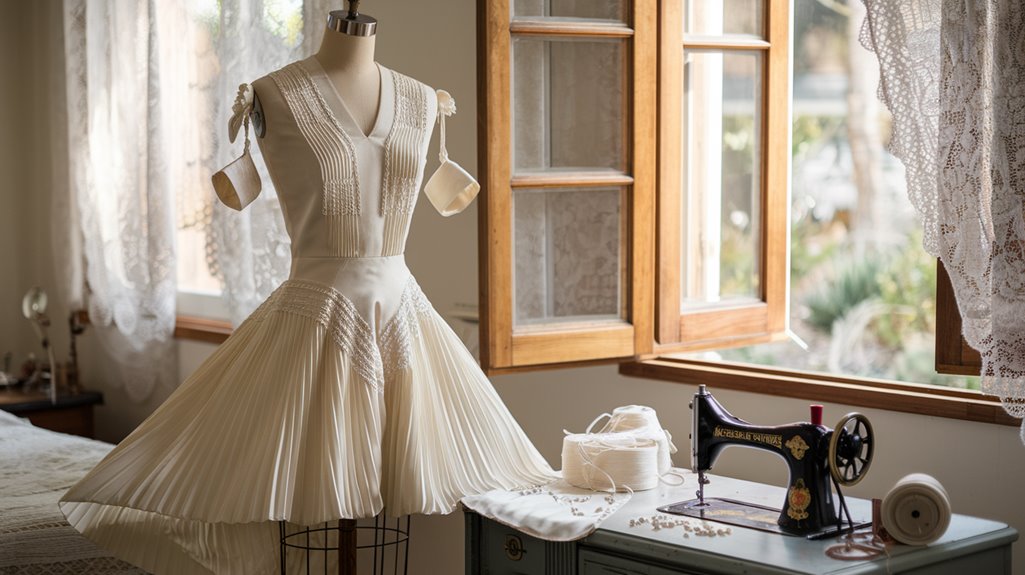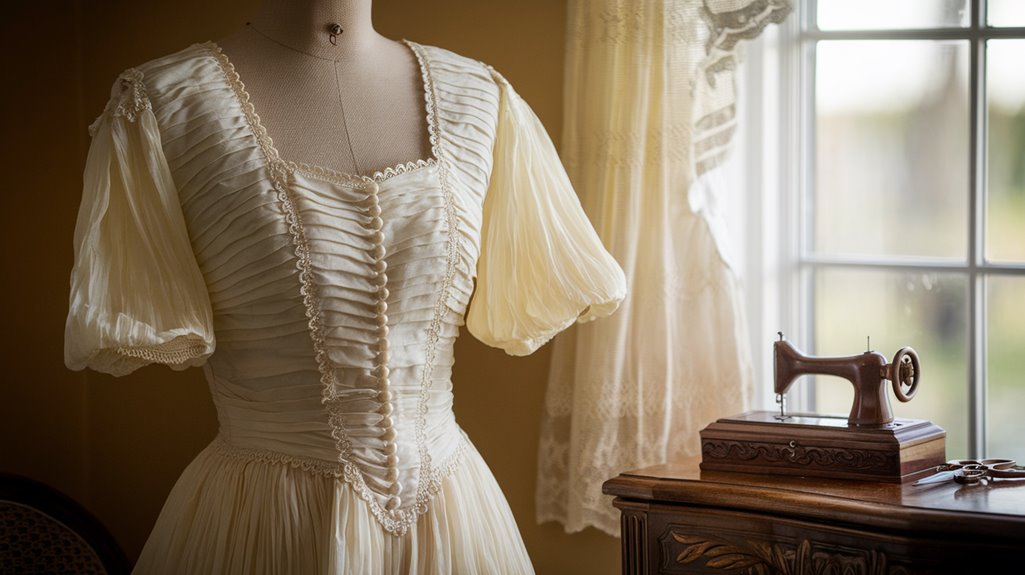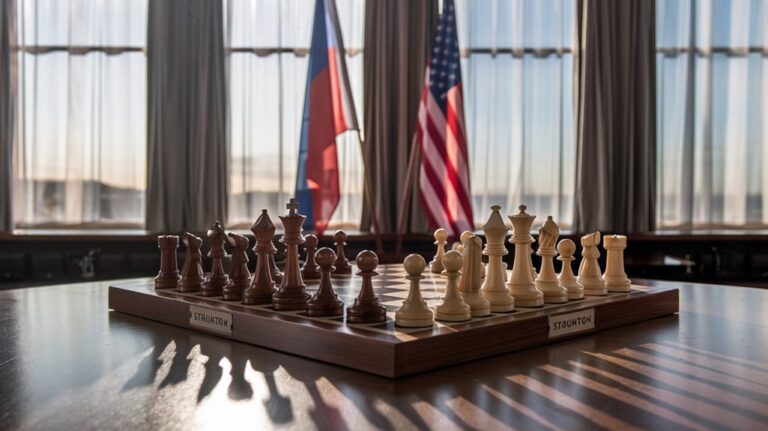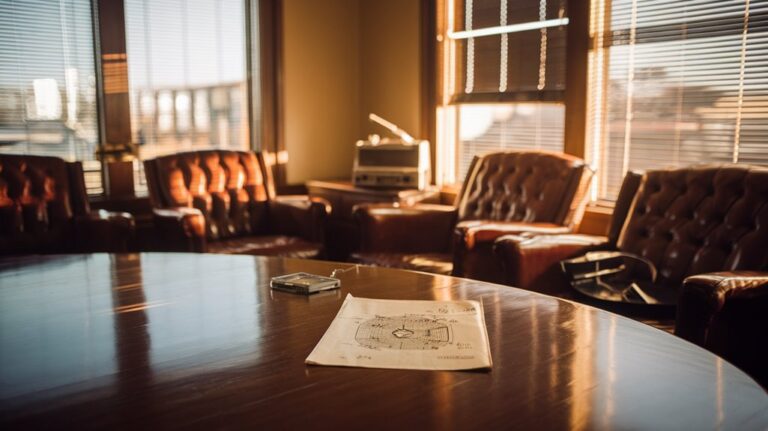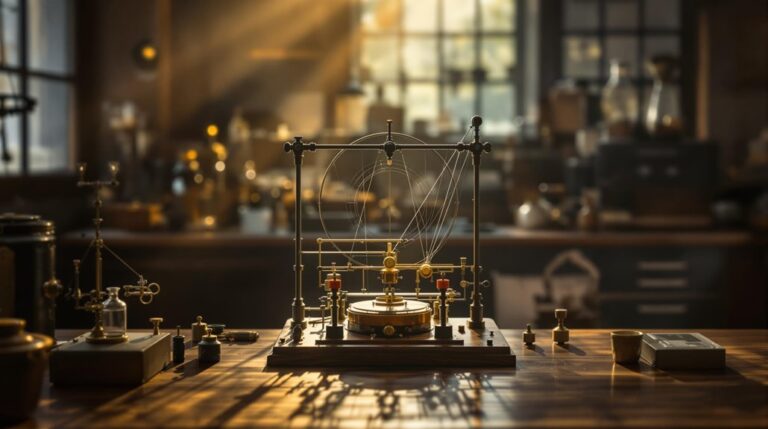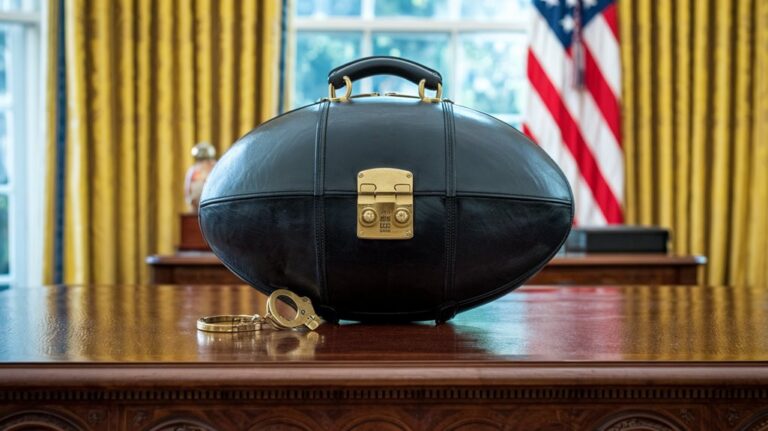WWII Brides Made Wedding Dresses From Parachutes
You've likely heard stories about wartime resourcefulness, but you might not know about one of World War II's most touching fashion innovations. When fabric shortages threatened to derail wedding plans, determined brides turned to an unexpected source: military parachutes. These silk and nylon lifesavers transformed into stunning wedding gowns, each stitch weaving together tales of love, sacrifice, and ingenuity. What makes these dresses truly remarkable extends far beyond their unusual origins.
The Wartime Wedding Dress Challenge
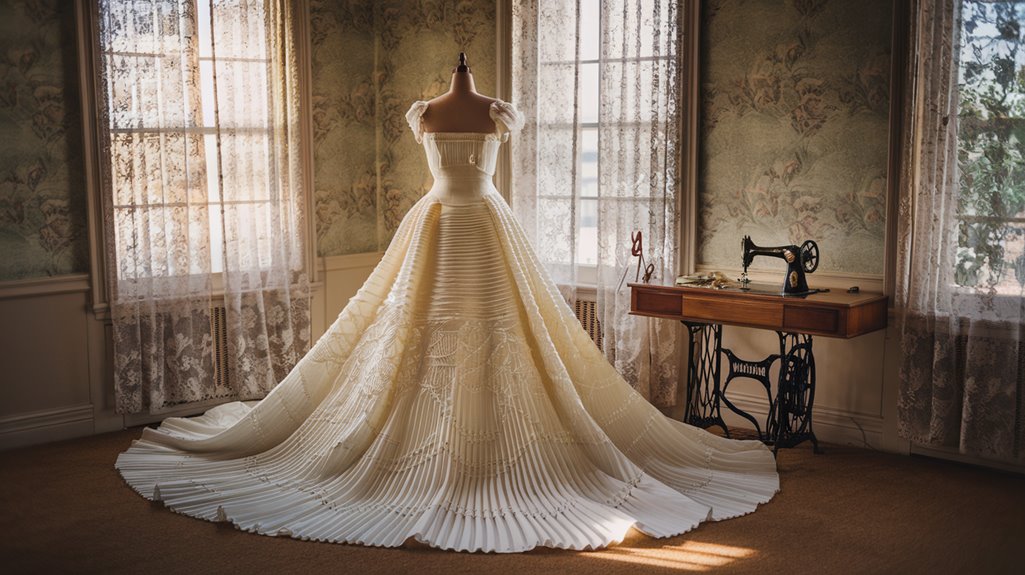
When World War II disrupted the fabric industry, brides faced an unprecedented challenge in finding materials for their wedding dresses.
With silk and nylon redirected to military use, you'd find women turning to unexpected sources for their special day. The shortage sparked remarkable fabric innovation as brides and seamstresses transformed military parachutes into elegant gowns. Under the Limitation Order L85, most clothing styles faced strict regulations to conserve materials.
These weren't just any parachutes – they often carried deep meaning, especially when made from the very materials that had saved their future husbands' lives. In fact, some soldiers even proposed with parachutes instead of traditional engagement rings.
The sentimental craftsmanship involved in creating these dresses went beyond necessity. You'd see women consulting magazines for creative ways to work with parachute panels, while others repurposed curtains and household textiles.
Despite material limitations, brides maintained traditional wedding dress styles through resourceful design and skillful adaptation.
From Military Necessity to Bridal Beauty
During the height of World War II, military parachutes unexpectedly transformed from life-saving devices into symbols of bridal beauty. The military collaboration between paratroopers and home-front families created a unique opportunity, as soldiers sent their reserve chutes home for repurposing.
High-quality white nylon and silk, initially rejected due to strict military standards, found new life in seamstresses' skilled hands. During the war, clothing rationing severely limited fashion choices for brides.
The fabric transformation wasn't just about necessity; it carried deep emotional significance. You'll find that these parachutes, which once saved soldiers' lives, became cherished wedding gowns that reflected both ingenuity and elegance. An estimated 1.8 million war brides married servicemen during this period, with many embracing this innovative wedding dress solution.
Professional seamstresses and DIY crafters alike took on the challenge, creating dresses that would later inspire modern designers and find homes in prestigious museums like the Smithsonian, preserving their remarkable wartime legacy.
Crafting Love Stories From Silk and Nylon
Behind every parachute wedding dress lay a remarkable story of craftsmanship and love.
You'll find that brides and seamstresses transformed this sentimental fabric through innovative techniques like ruching and gathering, creating stunning bodices and flowing skirts. These creative adaptations weren't just about making do – they represented the deep emotional connections between soldiers and their loved ones. Local dressmakers helped create Myrtille Delassus's stunning dress for her wedding to Sergeant Joseph Bilodeau. During wartime fabric rationing, rejected parachutes became a valuable resource for resourceful brides.
Whether working with silk or nylon parachutes, each bride added personal touches to make her dress unique. Some drew inspiration from Hollywood glamour, while others followed traditional bridal patterns.
The dresses often became cherished family heirlooms, passed down through generations. Through their resourcefulness, these wartime brides turned military surplus into lasting symbols of love, proving that even in difficult times, beauty and romance could flourish.
A Global Movement of Resourceful Brides
Through the scarcity and rationing of World War II, parachute wedding dresses became a global symbol of resourcefulness and love.
You'll find stories of these unique gowns stretching from America to France and Germany, where brides like Myrtille Delassus and Lilly Lax transformed military parachutes into elegant wedding attire.
The parachute symbolism wasn't just about making do with available materials – it represented wartime resilience and hope in the face of adversity.
Like War Brides Acts that helped women marry and immigrate to America, these dresses emerged as powerful statements of survival and new beginnings in displaced persons camps and war-torn cities.
Many women, including those among the 65,000 dependents who immigrated to Canada during WWII, found creative ways to make their wedding dreams come true.
Some brides even combined multiple combat parachutes to create their dream gowns.
Today, you can find these remarkable dresses preserved in museums worldwide, where they continue to tell stories of love conquering the hardships of war.
Preserving These Remarkable Gowns Today
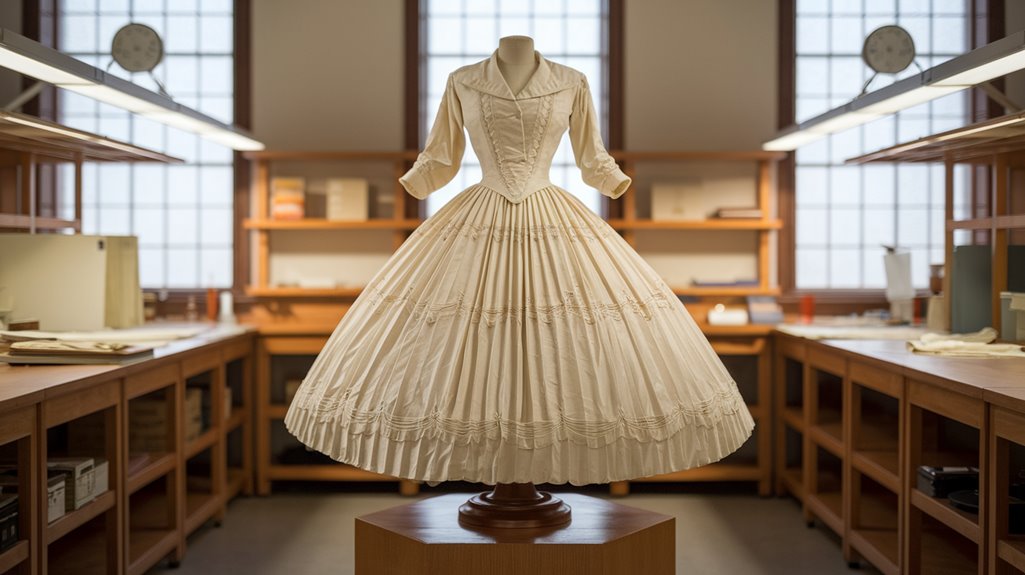
Today, you'll find these remarkable WWII parachute wedding gowns preserved in several prestigious museums across America. The Smithsonian showcases Major Claude Hensinger's wife's 1947 nylon creation, while the National Museum of the United States Air Force displays an intricate dress crafted from nine different combat parachutes.
At the San Diego Air and Space Museum, you'll discover Chuck Martin's life-saving parachute transformed into his bride's gown.
The Women's Museum of California features a stunning gown with silk-covered buttons that exemplifies the era's craftsmanship.
These museums prioritize dress preservation to protect these unique pieces of history. Each gown tells a powerful story of wartime ingenuity and romance, serving as both historical artifacts and symbols of cultural significance. The dresses represent material culture transformation during post-war transitions from 1945 to 1949.
Modern designers continue drawing inspiration from these preserved dresses, proving that their impact extends far beyond the 1940s into contemporary fashion and education.

